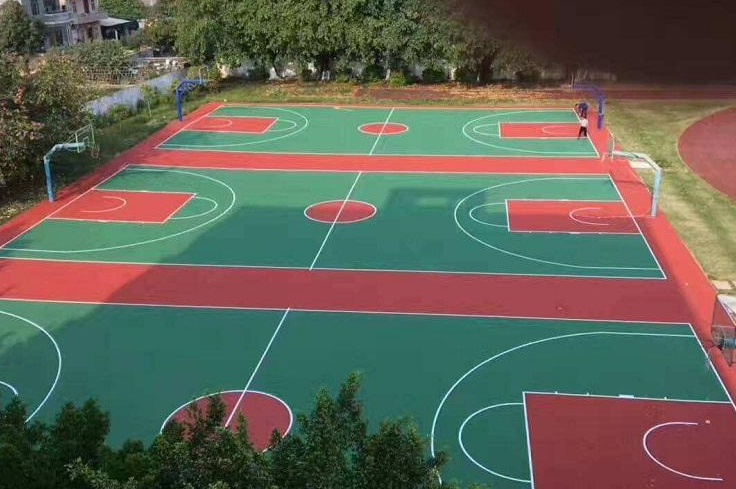 info@greeroad.cn
info@greeroad.cn
 24-Hour service hotline:400-039-3669
24-Hour service hotline:400-039-3669
 info@greeroad.cn
info@greeroad.cn
 24-Hour service hotline:400-039-3669
24-Hour service hotline:400-039-3669
Acrylic resin introduction Acrylic resin is a resin made by copolymerization of acrylic esters, methacrylic esters and other olefinic monomers. By selecting different resin structures, different formulas, production processes and solvent compositions, different types of resins can be synthesized. Acrylic resins with different properties and applications, acrylic resins can be divided into thermoplastic acrylic resins and thermo setting acrylic resins according to the differences in structure and film-forming mechanism.
The acrylic resin copolymerized with acrylate and methacrylate monomers has the main absorption peak of light outside the solar spectrum range, so the prepared acrylic resin paint has excellent light resistance and outdoor aging performance.

The use of acrylic resin The thermoplastic acrylic resin does not undergo further cross-linking during the film formation process, so its relative molecular weight is relatively large, has good gloss and color retention, water and chemical resistance, fast drying, convenient construction, easy to construct and heavy Coating and rework, the whiteness and positioning of aluminum powder are good when preparing aluminum powder paint. Thermoplastic acrylic resins are widely used in automobiles, electrical appliances, machinery, construction and other fields.
Thermosetting acrylic resin refers to a certain functional group in the structure, and forms a network structure by reacting with the functional groups in amino resin, epoxy resin, polyurethane, etc. added during paint making. Thermosetting resin generally has a relatively low molecular weight.
Hazards of Acrylic Resins Chemical Safety Data Sheet (msds) Acrylic Resin Health Hazards: Skin contact can cause skin irritation and is not suitable for rashes; Eye contact can cause eye irritation, tearing or blurred matters; breathing in this product can cause Upper respiratory tract irritation, cough and discomfort, or unspecific uncomfortable symptoms such as nausea, headache or weakness; ingestion of this product can cause specific uncomfortable symptoms such as nausea, headache or weakness. The patient should go to the hospital for treatment immediately.
The classification of acrylic resin can be divided into:
1、Emulsion polymerization
Emulsion polymerization is formed by the reaction and polymerization of monomers, initiators and reaction solvents. Generally, the resin formed is a resin solution with a solid content of 50%. It is a resin containing about 50% solvent. The general reaction is benzene (toluene or xylene), esters (ethyl acetate, butyl acetate), generally single or mixed, solid emulsion type Acrylic resin has the immutability of solvent. Generally, the product performance will be different due to the different choice of solvents. Generally have a certain color number. The glass transition temperature is lower because the reaction is generally done with acrylates without methyl groups. This type of resin can have a higher solid content, up to 80%, can be used as a high-solid coating, and it is easy to produce. However, transportation is inconvenient due to the immutability of the solvent.
2、Suspension polymerization
Suspension polymerization is a relatively complex production process, which is generally used as a method to produce solid resins. The solid acrylic resin generally adopts methyl-containing acrylate to react and polymerize. Acrylic esters without methyl groups generally have certain functional groups. The polymerization reaction is not easy to control during the reaction, and it is easy to become sticky and explode. The general process is to put monomers, initiators, and additives into the reactor and then put distilled water to react. After a certain time and temperature reaction, wash with water and then dry. Filtering etc. The production control of its products is relatively strict. If one of the links in the middle is not done properly, the products that come out will have a certain impact. It is generally reflected in the difference in color and molecular weight.
3、Bulk polymerization
Bulk polymerization is a more efficient production process. Generally, the raw materials are put in a special plastic film. Then it is reacted into agglomerates, taken out and crushed, and then filtered. Generally, the purity of the solid acrylic resin produced by this method is high in all production methods. His product stability is also good, but his shortcomings are also quite large. Acrylic resin polymerized with benzene is not very soluble in solvents. Sometimes the same monomer with the same ratio is difficult to dissolve several times in suspension polymerization. Moreover, the dispersibility of the pigment is not as good as that of suspension polymerized acrylic resin.
4、Other polymerization methods
In other polymerization methods, the solvent method is used for reaction. During the reaction, the solvent is used as an intermediary substance, and the solvent is removed after the reaction kettle is completed.
Hot news
Breaking news
Contact us
Great Road (China) ,All rights reserved.
